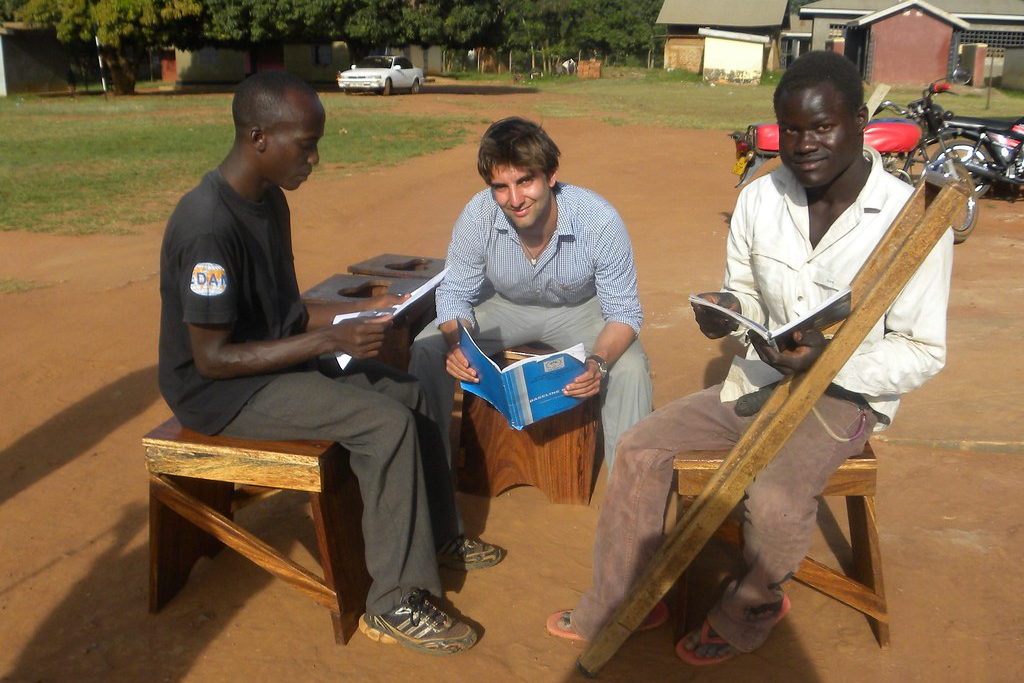Language barriers have always presented significant challenges for those who are deaf or hard of hearing.
Without adequate access to interpreting services, deaf people frequently have few opportunities for social interaction, employment, and education.
The ability to communicate effectively is crucial to daily life.
Thanks to technological advancements that have revolutionized the field of remote interpreting, the deaf community in Morocco now enjoys greater accessibility and inclusivity.
This article looks at how remote interpreting is growing in Morocco and how technology is improving deaf people’s access to services.
The Challenges of Traditional Interpreting Services
In Morocco, on-site interpreting has long been used to bridge the communication gap between hearing and deaf people.
However, this strategy has some shortcomings.
First of all, particularly in rural areas, it can be challenging to find qualified interpreters who are proficient in both sign language and spoken language.
The deaf community’s ability to access services is frequently hampered by a lack of interpreters.
Deaf people may occasionally feel awkward or self-conscious when an interpreter is physically present, which makes it more difficult for them to speak freely.
The Emergence of Remote Interpreting
Remote interpreting has advanced significantly with the advancement of technology, fundamentally altering how hearing and deaf people can communicate.
With the help of video conferencing tools like Zoom or Skype, remote interpreting can connect hearing people with interpreters in real time.
This method removes the geographical limitations of in-person interpreting and allows deaf people to access interpretation services from anywhere in the country.
Benefits of Remote Interpreting
Remote interpreting can be very useful for the Moroccan deaf community.
By providing easy access to interpretation services, it first improves accessibility.
People who are deaf can reduce waiting times and guarantee timely communication by connecting with interpreters on demand.
As a result, deaf people are able to participate more actively in a wide range of settings, including educational institutions, healthcare facilities, and public services.
Additionally, remote interpreting promotes privacy and reduces self-consciousness.
Deaf people who use video conferencing can communicate directly with interpreters without having an interpreter present in person.
As a result, communication can take place in a more informal setting with greater openness and confidence.
Overcoming Technological Challenges
There are some disadvantages to remote interpreting in addition to its many advantages.
One of the main problems is the need for a dependable internet connection and access to the right technology.
In remote locations or areas with inadequate infrastructure, getting high-speed internet access can be challenging.
Improved internet connectivity is being made across the country, especially in rural areas, to guarantee that everyone has access to remote interpreting services.
It is also essential to ensure the privacy and security of remote interpreting sessions.
Service providers and interpreters must put secure and encrypted platforms in place to safeguard the privacy of both deaf people and interpreters.
By overcoming these technological barriers, remote interpreting’s potential can be fully realized.
Training and Certification for Remote Interpreters
For remote interpreting services to be effective and of high quality, it is essential to have trained and certified interpreters.
Remote interpreters must be proficient in sign language, have a strong sense of empathy, and be at ease using videoconferencing technology.
Programs for training and certification should be established in order to ensure that interpreters meet these requirements.
Additionally, to help remote interpreters advance their skills and knowledge, opportunities for ongoing professional development ought to be made available.
The Future of Remote Interpreting in Morocco

As technology advances, the prospects for remote interpreting in Morocco seem promising.
With the advancement of artificial intelligence and machine learning, automated systems for translating and understanding sign language may one day be possible.
These systems can improve the usability and efficiency of remote interpreting services by bridging the communication gap between spoken language and sign language.
These advancements could potentially eliminate the need for human interpreters in some situations by allowing real-time translation of sign language into spoken language and the other way around.
The fusion of augmented reality (AR) and virtual reality (VR) technologies offers tremendous potential for remote interpreting.
Through immersive and interactive interpreting environments, AR and VR can help deaf people communicate more effectively.
These tools could improve the ways in which deaf and hearing people interact in a variety of settings.
Furthermore, for the continued advancement of remote interpreting in Morocco, collaboration between language specialists, tech innovators, and the deaf community is crucial.
By involving stakeholders in the design and development process, the technology can be altered to suit the specific needs and preferences of the deaf community.
Regular feedback and input from the deaf community will be helpful for the ongoing development and customization of remote interpreting platforms.
Furthermore, remote interpretation might extend beyond linguistic interpretation.
It can be used for remote speech-to-text services, enabling real-time transcription and captioning for deaf people.
Deaf people can gain a lot from this application in classrooms, conferences, and public events where access to accurate and timely captions is crucial.
Conclusion
Due to the growth of remote interpreting in Morocco, the lives of the deaf have undergone a significant transformation.
Traditional interpreting services are now more inclusive and available as a result of technological advancements.
Through the elimination of geographic barriers and reduction of wait times, remote interpreting has made it simpler for people to quickly and conveniently access interpretation services.
It has provided deaf people with a more secure and inviting communication environment, enabling them to express themselves without restraint.
Even though there are challenges to be resolved, such as ensuring you have dependable internet access and protecting your privacy, remote interpreting still has a lot to offer.
Through the use of technology, Morocco can keep building a more inclusive society where barriers to communication are eliminated and the rights of the deaf are fully upheld.
For those who are looking for additional support, Unspoken Language Services offers interpreting services to help bridge the communication gap between the deaf and hearing communities.
Thumbnail Photo Credit to: Photo by Girls Not Brides

